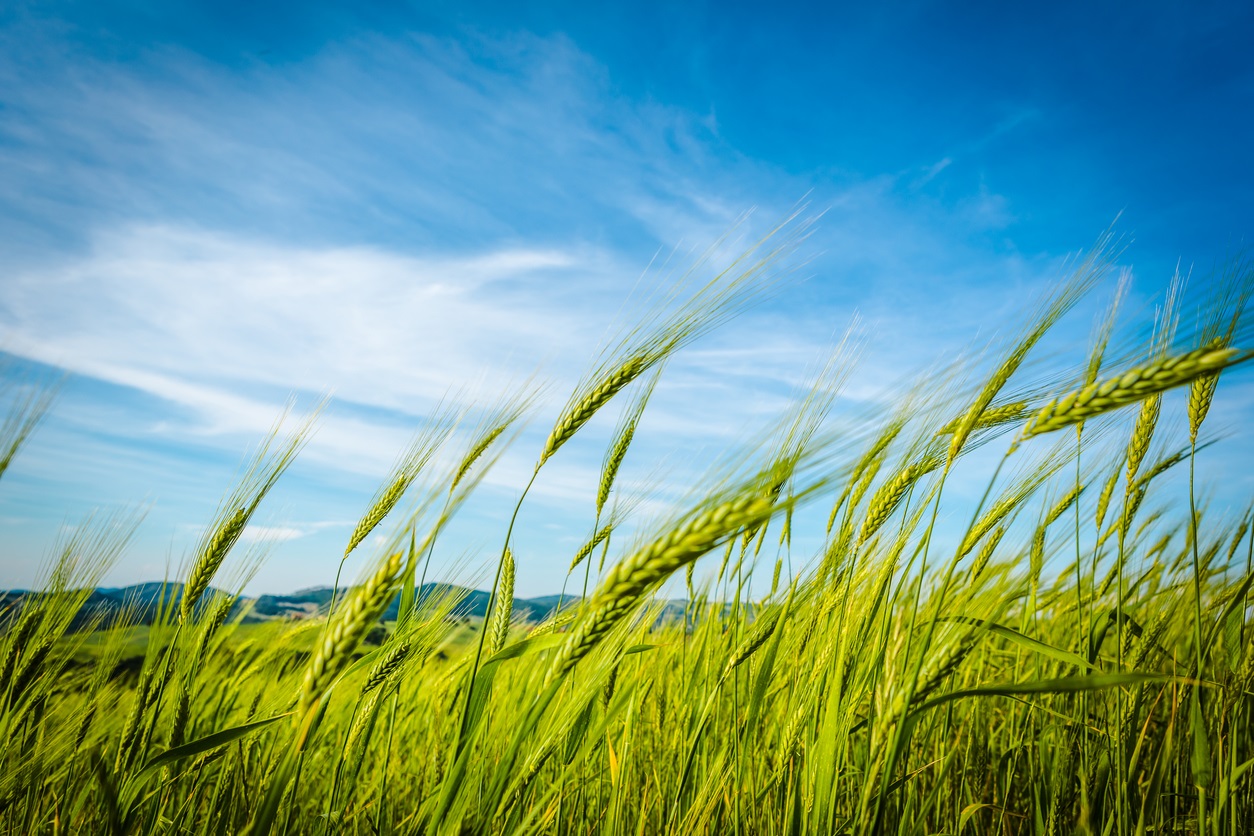By Ryan Koory, senior economist, Mercaris
In its 2017/2018 Organic Wheat Market Guide, Mercaris estimated that despite a 22 percent increase in U.S. acres, U.S. organic wheat production only grew by 10 percent in 2017. The lackluster production is entirely due to a 10 percent year over year (y/y) decline in organic wheat yields, but Mercaris expects organic wheat acres to achieve another year of double-digit growth in 2018 nonetheless.
In addition to expanding acres, growth in U.S. organic wheat supplies could receive an additional boost this year as recovering yields accelerate production gains in tandem with area expansion. As producers begin winter wheat harvesting, and wrap up spring wheat planting, now is a good time to look at the whole U.S. organic wheat picture, and what current conditions might mean for the 2018/19 organic wheat supplies.
Mercaris estimates that in 2017/18, U.S. organic winter wheat yields declined 6 percent y/y, following record-setting yields in 2016/17. With summer approaching, U.S. winter wheat harvesting has begun, and the first six months of 2018 have brought gloomy speculation of reduced winter wheat production as the top four U.S. conventional winter wheat producing states—Kansas, Texas, Oklahoma, and Colorado—have experienced widespread drought conditions. As a measure of pre-harvest crop potential, U.S. Department of Agriculture releases weekly crop condition values, rating a crop’s pre-harvest quality on a scale of very poor to excellent. For the week ending June 10, USDA rated only 38 percent of the U.S. winter wheat crop as being in either good or excellent condition, down from 50 percent at the same point in 2017.
Despite the fairly dim outlook for conventional winter wheat, it appears that organic winter wheat has been spared from the worst of the drought. Unlike the conventional sector, organic winter wheat is primarily produced in the Northern Plains region of the U.S., with the top two states—Montana and Wyoming—accounting for 15 percent of all U.S. organic winter wheat acres. More broadly, looking at the top ten organic winter wheat-producing states, 58 percent of these acres were reported as being in good-to-excellent condition the week ending June 10, up from 51 percent in the prior year. Montana appears especially well-off with 81 percent rated as in good-to-excellent condition.
As organic winter wheat appears to be spared the worst of the pre-harvest drought woes, organic spring wheat is more or less on track. Initially, cold and wet conditions delayed spring wheat planting across the northern portion of the U.S. According to USDA planting progress data, planting had reached 55 percent complete across the top ten organic spring wheat states as of May 13, down from 79 percent the year prior. But, as is known to occur, field conditions improved quickly through the remainder of May with planting reaching nearly 100 percent complete by the week of June 10 across the top ten organic spring wheat-producing states.
With the 2018/19 organic spring wheat crop largely in the ground, precipitation and heat become the factors to watch until harvest starts at the end of July. Unlike 2017, this year is off to a better start, as data provided by the U.S. Drought Monitor indicates this summer is beginning with more soil moisture available for crops in the crucial Northern Plains region.
Overall, the organic winter wheat crop looks set to achieve higher yields, and the organic spring wheat crop is off to a solid start. From this point in the marketing year, the organic wheat crop may well achieve year over year yield growth of 10 percent or more. With continued acreage expansion, and the potential for much better yields, producers could navigate the 2018/19 marketing year with a lot more grain in their bins.
What are you seeing with your local wheat crops? Let us know by tweeting us @Mercaris!





